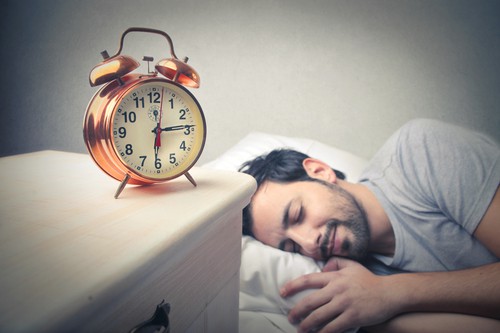As tempting as shopping online sounds, and not having to leave the comfort of your home, there are many reasons for visiting one of the mattress stores San Diego CA.
san diego mattress
Common Sleeping Disorders and What to Do About Them
We all want to sleep easy at night. That’s why we invest in a top quality mattress. Still, some of us suffer from sleeping disorders. Some are quite mild and can be shrugged off as a slight nuisance. Others can be quite troublesome, and even downright dangerous. Some of them need to be treated by a professional, whereas others can be caused by something as preventable as having a bad bed, or an unfavorable sleeping position. Following is a list of most common sleeping disorders.
Sleep apnea
Sleep apnea is a disorder where the sleeper’s breathing is interrupted during sleep. It can be quite a serious condition if not treated. There are actually two subtypes of this condition. Obstructive sleep apnea is caused by an obstruction in the airways. Most commonly, it is the soft tissue of the velum which causes the obstruction. It is characterized by snoring, fatigue and sleepiness during daytime as well as gasping during sleep.
The second type of sleep apnea is more serious. It is called central sleep apnea. It is not caused by the blockage of airways, but by the brain’s failure to instruct the body to breathe. The name comes from the connection to the problem in the central nervous system. Central sleep apnea is characterized by gasping for air and awakening at night.
Restless leg syndrome
This disorder is not limited to the sleeping state, as it is often reported in people who are fully awake. It occurs during longer periods of non-movement. The sufferers experience strong urge to move their limbs. The reason it is categorized as a sleep disorder is that it often occurs in the evening, making it very difficult to fall asleep, or to stay asleep. It leads to daytime sleepiness, irritability and inability to concentrate during the day.
Narcolepsy
This is a neurological disorder which causes the sufferer to have irregular sleeping patterns, with uncontrollable urge to fall asleep during the day. These episodes of sleepiness can occur at any time, which makes them very dangerous for the sufferers.
Circadian rhythm sleep disorder
This is far less problematic than the previous entry, yet it can cause quite a lot of problems to the sufferer. This disorder manifests in the inability to fall asleep and wake up at socially accepted times. The sufferer can attain a normal duration and quality sleep, just not at the expected time. Circadian rhythm of these individuals is not disrupted, only shifted to atypical time of day.
Insomnia
The most well-known sleep disorder is probably insomnia. The inability to attain sleep at times affects at least 50% of the population. This is known as acute insomnia. It can be caused by many things, including stress, diet, uncomfortable bed, etc. If the problem persists for longer than one month, the condition is considered chronic. People suffering from insomnia reportedly suffer from lack of energy, forgetfulness, difficulty concentrating, but can also suffer some more serious consequences, such as poor performance at work/school, disruptions in personal or professional lives and even depression.
All of these conditions can seriously decrease the quality of our lives if left untreated. However, if you recognize some of the symptoms in yourself, you don’t necessarily suffer from the disorder. You might just be sleeping on a wrong type of mattress. To find out more about what’s best for you, consult our useful blog post about mattress types. If you decide you need a new mattress, find our mattress store in San Diego, or contact us.
The Sleep Cycle Explained
Have you ever had one of those nights when you slept for at least 8 or 9 hours, yet you woke up as tired as you went to bed? Or even more, so have you ever had a night when you only slept 4-6 hours and you woke up feeling recharged and energized? Not all sleep is equal. The quality of your sleep has a lot to do with your sleep cycle. For better sleep, read up on the sleep cycle, how to best manage your sleep and wake up fresh and rested every day.
The basics
First of all, sleep is not a time when our brains shut down and rest from the hard day’s work, as we once thought. Instead, it is a state of altered consciousness, where our typical waking brain patterns are replaced by different ones. The human sleep is controlled by something called the circadian clock, or the circadian rhythm. It is also known as the inner clock. It tells us when it’s best to sleep. It may vary from person to person, but only slightly. Any bigger discrepancy form the norm is considered a sleeping disorder.
Sleep stages
Two distinctive stages of sleep are REM and non REM sleep. Periods of human sleep usually repeat every 90 minutes. There tend to be 5 cycles per night with non-REM preceding REM phase, and then changing between them until waking up. Non-REM sleep is divided into three separate stages, with each having distinctive physiology and function. So even if you have enough time to sleep, skipping some of these stages can result in feeling tired afterwards.
Non-REM
This part of sleep comprises about 80 percent of all sleep in humans. Some common identifiers of non-REM sleep are a decrease in heart rate, body temperature and energy consumption. Even the brainwaves become slower and bigger. There are 3 stages of non-REM which precede one phase of REM in the sleep cycle.
NREM 1 or light sleep is the first stage, somewhere between wakefulness and sleep. Muscles are still active and can twitch. This is when hypnic jerks occur.
NREM 2 is a deeper kind of sleep. The muscle activity decreases and the sleeper becomes completely unaware of the external world.
NREM 3 or deep sleep is also known as slow-wave sleep. In this phase, most of the external stimuli provoke no reaction from the sleeper. This is the most restful phase of sleep, as it relieves the subjective feeling of sleepiness the most.
REM
REM stands for Rapid Eye Movement and it is most commonly associated with dreaming. The name itself is derived from the quick, involuntary movement of eye muscles. This part of the sleep cycle is often associated with a type of paralysis of skeletal muscles. During this stage, the sleeper’s EEG waves are quite similar to those of a wakeful person, but they are harder to awake than those in any other sleep stage. In addition to that, the brain seems to consume more oxygen and energy than in a wakeful state.
The real purpose of REM is unknown, but the lack of it makes higher cognitive function difficult to perform. Very young children tend to have more REM, but from the age of five, it reduces to just 2 hours per day.
In order to have a healthy night’s sleep, you need to go through all these phases uninterrupted. There are many ways to help you with this, but the first step is a comfortable and supportive mattress. If you’re in San Diego looking for a mattress and you need to catch up on your REM sleep, stop by San Diego Mattress Makers today and get a free nap 🙂 Come by our store or give us a call today.


